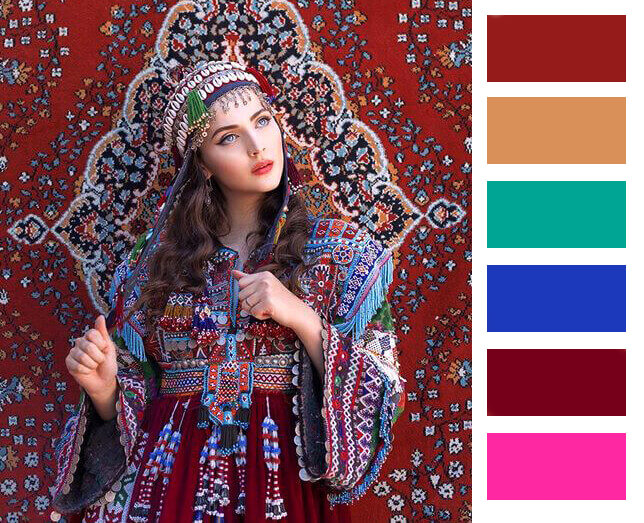The most important reason for learning how to decorate with a Persian carpet is that its the quickest, easiest and cheapest way to completely revamp the look and feel of the room, instantly adding exoticism and luxury.
Its important to realise that you need to see your floor – not the wall – as the ideal area for art display, the ‘gallery’ where you will display your largest piece of art.
The first step in how to decorate with a Persian carpet is to draw up a floor plan of the room.
This exercise will help you break out of the idea that you need one Persian carpet per room. Depending on the room, a combination of carpets might be more interesting. Sliding carpets around will help you to feel what might be a more interesting scheme.
The second step in how to decorate with a Persian carpet is to create a mood board or inspiration board, which is like a visual brainstorming session . A mood board does not necessarily have to be a physical board, or a computer document.
It can be anything that inspires you, even one object in physical form. It’s the focus that will keep the room cohesive.
Also remember words… what feelings do you want the room to have? Luxury, comfortable, cheerful, sexy? Is there a line of poetry that inspires you? A song that you love?
So it can be:
Out of the inspiration, everything else is drawn. You can develop the detail of the mood board to any level that works for you. If you prefer an organic approach – I do – a single inspiration piece is enough.

The third step in how to decorate with a Persian carpet is knowing what your budget will buy you.
There are several factors that affect the price of a carpet:
3.1 Size:
The bigger the carpet, the more labour and materials has been employed and consequently, the more it will cost.
3.2 Materials:
Additionally, the materials used affect the price. Really good wool or really expensive natural dyes will be more expensive.
Cochineal red, pomegranate red, orange, green, sage green are super beautiful colours and also more expensive.
Red carpets tend to be the most affordable option. Blue and cream carpets are more expensive.
3.2 Condition and age:
The newer the carpet, the more expensive it will be. This is because the wool will be high and offer a really long lifetime – Persian carpets typically last 100 years.
Condition is also important when determining value; the more worn a carpet is, the more affordable it will be.
Carpets are categorised by condition in the following way:
New Persian carpets
o New – A new carpet is already around 3 to 5 years old since carpets typically take 3 years to produce
o As-new – a ‘demo’ kind of carpet, barely used with tiny aspects of wear
Secondhand Persian carpets
o Preloved – under 40 years, wear consistent with age and use
o Vintage – over 40 years, wear consistent with age and use
Its important to consider these variables when determining your budget.
If you don’t have a lot to spend, you’ll need to go for a smaller, older carpet and realise that it’s not reasonable to expect that a small budget e.g. R5000 will buy you a large Persian in good condition.
Conversely, if you are lucky enough to find a large Persian carpet at a very cheap price, its not reasonable to expect that the carpet will be in good condition and more reasonable to expect issues like moth damage, holes, pet staining and so on.
Generally though, even a Persian carpet with a lot of wear will not be ‘cheap’.
The fourth step in how to decorate with a Persian carpet is understanding the palette. Persian carpets typically come in the following base colours;
NOTE that handknotted Persian carpets do not come a rainbow of colours. If you are being presented with a carpet in a novel colour, its most likely that its machine made.
You will have your own feelings and associations with colours, but generally, we can say the following of the base colours:
4.1 The feeling of Red
Red is a warm colour. It is also bright. Depending on your culture, you may associate it with love, passion and stimulation.
A practical and forgiving colour for the traffic of a busy family and even the occasional glass of red wine.
4.2 The feeling of Blue
Blue is a cooler tone, more mysterious. It can be very restful and serene.
Also a practical and forgiving colour that allows for lots of traffic.
4.2 The feeling of Cream
Cream is a very light tone, it bounces light into a room. It has elegance and luxury. It’s a colour that is well suited to beach houses and high end homes.
The fifth step in how to decorate with a Persian carpet is to understand the patterns and how to use them.
5.1 Rural / Tribal Persian carpets
Some Persian carpets are made in rural areas. These carpets will show a wild paradise, a natural garden.
Geometric rugs have a bold masculine feeling which can be used to create or contrast with the feeling of a room.
Generally, tribal is a style chosen by younger clients and male clients – their designs have a strong yang energy.
Tribal carpets are collectible due to the uniqueness of their designs.
5.2 Urban carpets
Other Persian carpets are made in urban areas. These carpets will show a paradaida, a walled garden that is designed by humans. There is a fountain at the centre, ‘canal’ lines that divide the carpet north and south, east and west and a wall or border.
Curvilinear rugs have a soft feminine feeling which can be used to create or to contrast with the feeling of a room.
The style of urban carpets are named according to the places where they are produced:
So now that you understand the characteristics of the Persian carpet floor art you will use, consider the colour palette of your chosen carpet, its feeling.
It’s often useful to use the accent colours of the carpet in the accent items (sofa, cushions, decor) of the room.
Restraint is key to this method… chose a barely visible accent colour, do one large décor item in that colour and leave it at that.
Another important of your design is balance, the ‘weight’ of a thing and understanding how to balance that ‘weight’ with another thing.
Cohesion is achieved by sewing one thread through the whole room, and often that thread can be a colour or substance.
When decorating with a handknotted Persian carpet, it’s useful to shift focus out of a Western view of art into a world where the floor is regarded as the ideal area for art display.
Western art is :
By contrast, Persian floor art is :
